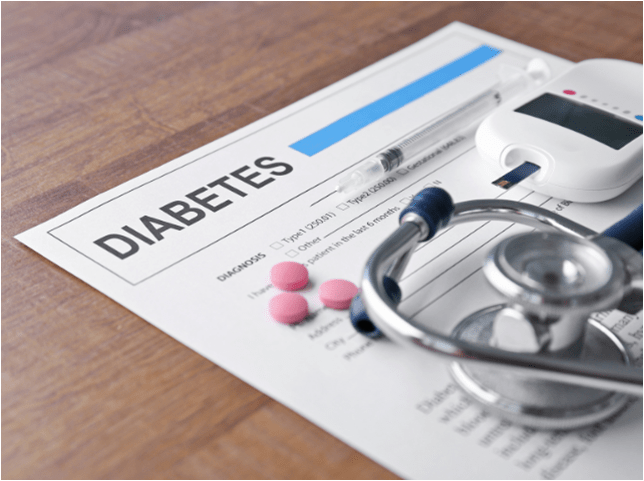Table of Contents
If you have type 2 diabetes, you may not need to rely on insulin injections; but there may be times, however; when despite all your best efforts and commitment to diet and regular exercise; your blood glucose levels just won’t stay down. According to the Centers for Disease Control (CDC); only an estimated 16 percent of American adults treat their type 2 diabetes with diet and exercise alone. The next line of defense is medication.
The Basics
If you’re having trouble managing your type 2 diabetes with diet and exercise alone; your doctor may prescribe medication to improve your blood glucose control. While some people with type 2 diabetes may require insulin treatment at some point; oral medications are typically given an adequate trial first. However, in some cases, insulin may be prescribed earlier. Sometimes insulin therapy will be combined with an oral medication to improve its effectiveness. There are also several new noninsulin injectable medications on the market that may be recommended by your doctor.
Make sure that your doctor is aware of all other medications—prescription, over-the-counter, or herbal—that you are taking. The therapeutic action of your diabetes drug may be either increased or reduced when taken along with certain substances and medicines.
Oral Medications
There are eight classes of oral medications for type 2 diabetes: sulfonylureas, biguanides, thiazolidinediones (also called TZDs or glitizones), alpha-glucosidase inhibitors, meglitinides, DPP-4 inhibitors; centrally acting dopamine agonists, and bile acid sequestrants. Doctors also prescribe combination drugs, which combine medications across two classes of drugs. Diabetes drugs that are currently on the U.S. market work in one of several ways:
- Inhibiting glucose production by the liver (biguanides, DPP-4 inhibitors)
- Increasing insulin sensitivity (TZDs)
- Stimulating insulin production (DPP-4 inhibitors, meglitinides, sulfonylureas)
- Blocking or slowing the digestion of carbohydrates (alpha- glucosidase inhibitors)
- By increasing activity in the dopamine receptors of the brain where neuroendocrine functions are controlled (centrally acting dopamine agonists)
- Through a combination of two or more of the actions described (combination drugs)
The mechanism by which some diabetes drugs lower blood glucose is not yet completely understood. Welchol (colesevelam hydrochloride), for example, is a drug that was first approved for high cholesterol. But researchers discovered that the drug was also effective in lowering the A1C, or long-term blood sugar measurement; of people with diabetes. While the underlying reason for this helpful side effect is not known, the drug has since been approved for diabetes treatment as well.
A Smooth Start
When you start on a new medication; log both the amount and timing of the dosage in your blood sugar logbook. This will give you and your health care provider a good idea of the impact the drug is having, and will allow her to make any necessary adjustments. You should note the side effects, if any, you have from the drug as well. Some side effects will often wane and even disappear completely as your body becomes accustomed to the medication. In some cases, however, a dosage or medication change may eventually be required.
Your doctor should explain both the amount; and frequency of your dose and any specific instructions about when to take it. However, it’s also a good idea to read the drug labeling and directions for use that your pharmacist provides to ensure that you’re taking your medication at the appropriate time and dosage. If the printed instructions seem to vary from what you have been told, call your physician immediately for instructions.
Practical Matters
Medication won’t work if you forget to take it, so put your meds in a place where they are in sight and on your mind. If you take several prescription drugs, a medication organizer may be a good investment for you. There are many on the market, ranging from simple plastic caddies to more elaborate electronic systems. A watch with an audible alarm can also help keep you on track. Some people find it convenient to keep their medication with their blood glucose testing supplies. If you’re prescribed a drug that must be taken with meals, keep it on the kitchen table or counter. You should also carry several pills in your purse, car; or another “always with you” spot for meals on the road. Make sure you rotate your extras weekly so they don’t expire.
Keeping meds within arm’s reach can be hazardous in households with small children. Try keeping an empty pill bottle on the table as your reminder; and stow the full bottle in a childproof cabinet.
Finally, always avoid storing your medications in heat, humidity; or direct sunlight, as temperature extremes can cause some drugs to lose their potency. And never take a drug that is past its expiration date.
Sulfonylureas
Sulfonylureas are the oldest class of oral diabetes medication, and were first introduced in the 1950s. Brand names of these drugs include Amaryl (glimepiride), DiaBeta (glyburide), Diabinese (chlorpropamide), Dymelor (acetohexamide), Glucotrol (glipizide), Glucotrol XL (glipizide), Glynase PresTab (glyburide), and Micronase (glyburide). The generic sulfonylureas tolbutamide and tolazamide are also available, but are prescribed infrequently.
The oldest sulfonylurea drugs—Diabinese, tolbutamide; and tolazamide —require the largest dosage sizes (with daily doses ranging from 100 to 3,000 milligrams). The newer, or second-generation, sulfonylureas are much more potent. These second-generation drugs are usually taken once daily; your doctor will tell you when and how often to take your medication. Whatever the schedule, you should always try to take your medication consistently at the same time from day to day.
How They Work
Called hypoglycemic agents, sulfonylurea drugs primarily work by causing the pancreas to release more insulin; which in turn lowers blood glucose levels. For this reason; sulfonylureas may not be effective in people with long-standing diabetes who have lost most pancreatic beta cell function. Some sulfonylureas such as Amaryl (glimepiride), and Glucotrol, also work to decrease insulin resistance by binding with insulin receptors. So in addition to increasing insulin output, these drugs allow the body to more effectively use the insulin it produces.
Possible Side Effects
The most serious potential side effect of the sulfonylurea drugs is a hypoglycemic reaction, or low blood sugar episode. The older sulfonylureas, in particular, are more likely to cause this reaction if taken in conjunction with other medications. Patients taking some of these first-generation drugs may run an increased chance of cardiovascular problems; so anyone with a history of heart problems should speak with his or her doctor about the potential risks.
Other possible side effects include, but are not limited to, the following:
- Nausea
- Rash and/or itching
- Photosensitivity (skin sensitivity to sunlight)
- Dizziness
- Drowsiness
- Headache
- Weight gain
The potential for weight gain can be a problem for overweight patients; as weight gain will work against the benefits of the drug by increasing insulin resistance. Your physician may prefer to use a different class of drugs; such as biguanides, for your treatment if you are significantly overweight. Sulfonylureas (particularly chlorpropamide) also have the potential to react with alcohol, causing nausea, vomiting, and facial flushing. If you drink, talk to your doctor about this side effect before starting your prescription.
Biguanides
The biguanide class of drugs—Glucophage (metformin), Glucophage XR (metformin hydrochloride, extended release), Glumetza, and Riomet (liquid metformin)—is one of the most widely prescribed for type 2 diabetes. Biguanides are often preferred over sulfonylureas because they don’t cause hypoglycemia nor do they promote weight gain. They have also been shown to have a positive effect on blood lipid levels.
Metformin is usually taken two to three times daily with meals. The extended release version is designed for once-a-day use, usually with an evening meal. It may also be used in conjunction with a sulfonylurea drug (the combination drug Glucovance is both metformin and glyburide); or with insulin therapy.
How They Work
Metformin works by suppressing the amount of glucose your liver pumps out; and consequently reduces the amount of insulin produced by the body. This drug also increases liver, muscle, and fat sensitivity to insulin. Metformin does not promote weight gain (as some type 2 drugs do) and may improve cholesterol profiles in some patients.
Possible Side Effects
Metformin is contraindicated, or not recommended; for many people with kidney or liver problems due to the risk of lactic acidosis, a rare but potentially fatal buildup of lactic acid in the bloodstream that occurs when the kidneys do not adequately remove lactic acid. Your doctor can advise you whether the drug is appropriate for you if you have kidney or liver impairment.
Signs of lactic acidosis include weakness, fatigue, dizziness, breathing problems, and unexplained muscle and/or stomach pain. If you experience any of these symptoms while taking metformin; and suspect lactic acidosis, call your doctor immediately or go to the nearest emergency care facility.
Potential Side Effects
Biguanides are also not recommended for use in patients with congestive heart failure. Other potential side effects of metformin include the following:
- Gastrointestinal distress (gas and diarrhea)
- Nausea
- Metallic taste in the mouth
- Depletion of vitamin B12 levels
Because up to 30 percent of patients who are prescribed metformin experience gastrointestinal discomfort; dosage is generally started quite low; and then slowly increased. The extended-release versions of metaformin are less likely to cause gastrointestinal side effects.
Thiazolidinediones (TZDs)
Actos (pioglitazone) is the only thiazolidinedione (TZD) drug widely available in the United States. The Food and Drug Administration (FDA) has approved Actos for use with insulin, metformin, or sulfonylurea drugs. It is typically taken once daily.
A second drug, Avandia (rosiglitazone), was withdrawn from general retail pharmacy sale in late 2011 following several large-scale studies; that associated the drug with an increased risk of heart attack. Avandia is now only available through a special access program administered by GlaxoSmithKline, the drug’s manufacturer. The Avandia-Rosiglitazone Medicines Access Program covers Avandia and the rosiglitazone combination drugs Avandamet and Avandaryl; and is only open to those patients with type 2 diabetes who were successfully treated with these drugs previously; or who have not been able to control their blood sugar with any other medications.
How They Work
The TZD drugs, which are also called glitazones or insulin sensitizers; target the insulin receptors in muscle and fat cells to increase the level of insulin sensitivity in the body. These drugs reduce glucose production by the liver (to a small extent) and are also effective in controlling blood pressure. Some TZDs also may be helpful in lowering triglyceride levels and in increasing HDL (or “good”) cholesterol.
Possible Side Effects
The use of Actos for more than a year has been associated with an increased risk of bladder cancer. People on higher doses of Actos for longer periods of time seem to be at the greatest risk for bladder cancer. Anyone with a history of bladder cancer or being treated for the condition should not take Actos.
Avandia has been associated with an increased cardiovascular mortality risk in several large trials of type 2 patients. If you take Avandia; you should talk to your doctor about your overall risk of cardiovascular problems and whether or not the drug is right for you.
TZD Drugs
TZD drugs have also been linked to congestive heart failure (CHF), and they are known to make pre-existing CHF worse. Patients with CHF should not take any TZD drug. If your doctor starts you on a TZD; or increases your dose, you and your doctor should watch carefully for signs of edema (swelling); sudden rapid weight gain, and dyspnea (severe shortness of breath)—all symptoms of heart failure.
If you take a TZD, you must also have regular testing of the liver enzymes ALT/AST. Liver enzyme levels should be tested before treatment starts, every two months for the first year you take the drug; and as recommended by your doctor thereafter. TZDs should be discontinued if liver enzyme levels rise more than three times the normal upper limit; and should not be started in patients who have ALT levels that are greater than 2.5 times higher than the normal upper limit.
Other side effects of TZD therapy may include the following:
- Anemia
- Weight gain
- Muscle weakness
- Headaches
- Fatigue
- Cold-like symptoms
Alpha-Glucosidase (AG) Inhibitors
The alpha-glucosidase (AG) inhibitor class of type 2 drugs consists of Glyset (miglitol) and Precose (acarbose). Also called starch blockers; these medications must be taken at each meal with the first bite of food in order to be effective. AG inhibitors may be prescribed along with a sulfonylurea drug, metformin, or insulin for some patients.
How They Work
Glyset and Precose work by slowing digestion. More specifically, they block the enzymes that are responsible for the breakdown of carbohydrates in the intestine; so blood glucose rise is slower and steadier. They may be prescribed for you if you have a hard time keeping your postprandial (after-meal) blood glucose levels under control. AG inhibitors may be a preferred therapy in overweight patients; since they do not promote weight gain like the sulfonylureas and TZDs do.
Possible Side Effects
Because of the way they work, the AG inhibitors’ side effects are primarily gastrointestinal; and include bloating, diarrhea, gas, and cramping. However, like metformin; these uncomfortable side effects can be greatly reduced by starting with a small dose and gradually increasing it. People with serious gastrointestinal disorders; including intestinal disease or obstructions, inflammatory bowel disease, and colonic ulceration, should not take AG inhibitors.
Meglitinides
Prandin (repaglinide) and Starlix (nateglinide) are currently the only FDA-approved meglitinide class drugs in the United States. Like AG inhibitors; they are taken at mealtimes (usually about fifteen minutes before eating) to prevent a postprandial (after-meal) blood sugar rise. People who tend to test high after meals may benefit from treatment with meglitinide drugs.
Prandin is also FDA-approved for use with the insulin sensitizers Actos (pioglitazone) and Avandia (rosiglitazone) and for use with metformin. Starlix is cleared for use with metformin.
How They Work
Meglitinides are short-acting oral hypoglycemic agents that bind to and stimulate the insulin-producing beta cells of the pancreas. Taken before a meal; these drugs can boost what is known as first-phase insulin release—the production of insulin that is a response to the initial boost of carb-generated blood glucose after a meal. Both Prandin and Starlix can be taken anytime from thirty minutes prior to a meal to right before the meal.
Possible Side Effects
Hypoglycemia can occur as a side effect of the meglitinide drugs. Symptoms of a low blood glucose episode include sweating, shakiness, dizziness, increased appetite, disorientation, heart palpitations, nausea, fatigue, and weakness. Hypoglycemia should be treated immediately with a fast-acting carbohydrate. Patients new to type 2 medications may also experience weight gain with meglitinides. The most commonly reported side effects that occur with meglitinide drugs are the following:
- Cold and flu symptoms
- Headache
- Diarrhea and other gastrointestinal complaints
- Joint and back pain
If you take a meglitinide drug, you should monitor your blood sugar levels either one or two hours after eating to ensure your medication is working properly. If blood sugar readings still seem too high, talk to your doctor about adjusting your dose.
Dipeptidyl Peptidase-4 (DPP-4) Inhibitors
The first DPP-4 inhibitor, Januvia (sitagliptin, by Merck), was approved in 2006 for use in type 2 adults. Onglyza (saxagliptin, by Bristol-Myers Squibb and AstraZeneca) followed in 2009; and Tradjenta (linagliptin, Boehringer Ingelheim and Eli Lilly) received FDA approval in 2011.
All the DPP-4 inhibitors are taken once daily. This class of drug helps to stimulate insulin production while suppressing glucagon production by the pancreas; thereby decreasing the amount of glucose in the body.
These drugs generally do not cause weight gain and are not associated with hypoglycemia when used alone. And unlike some other oral medications, they have a very low incidence of gastrointestinal side effects (e.g., nausea, vomiting, diarrhea). This makes DPP-4 inhibitors a good choice for many people with type 2 diabetes.
How They Work
Dipeptidyl peptidase-4 (DPP-4) is a naturally occurring enzyme that breaks down incretins, which are hormones generated during the digestive process. Incretins bind to beta cell receptors on the pancreas, stimulating the release of insulin. The incretin known as glucagon-like peptide-1 (or GLP-1) also helps to suppress the production of glucagon by the pancreas (and subsequent glucose release by the liver). But after GLP-1 is released by the gut; it only lasts about two minutes in the human body before it is broken down by DPP-4. Drugs in the DPP-4 inhibitor class block the action of the DPP-4 enzyme, which helps these important incretins regulate blood glucose levels by increasing insulin production; and lowering glucagon output.
Side Effects
Headache, sore throat, muscle pain; and minor respiratory problems are the most commonly reported side effects of all of the DPP-4 drugs. Respiratory problems range from nasopharyngitis (stuffy or runny nose) to upper respiratory tract infection.
DPP-4 inhibitor use has also been linked to an increased risk of pancreatitis. Anyone with a history of pancreatitis, gallstones, or high triglyceride levels should let their doctor know; as DPP-4 inhibitors may not be a good choice for them.
Because DPP-4 is a relatively new drug class, further long-term research and follow-up studies are needed to determine the full range of potential side effects; and risks associated with these drugs.
Centrally-Acting Agonist Inhibitors
Cycloset (bromocriptine mesylate, by Santarus) is the first in a new class of drugs that works by influencing brain activity. The drug is taken once a day with food—first thing in the morning when dopamine in the brain is at its lowest level—and lowers blood sugar levels; without increasing insulin production by the body. The drug is often prescribed with other diabetes medicines (metformin, sulfonylureas, or TZDs) to manage postprandial (after meal) blood sugar spikes.
How They Work
Although Cycloset has undergone clinical trials and is FDA approved; researchers still don’t completely understand what makes the drug effective in lowering blood sugar levels. They do know that the drug increases dopamine activity in the brain; which is thought to be the mechanism by which it works. People with type 2 diabetes appear to have lower levels of dopamine activity in the morning; and the theory is that these low levels are directly related to their body’s ability to control blood sugar.
Side Effects
The most common side effects of Cycloset are low blood sugar, nausea, dizziness, fatigue, and headaches. The drug can also lower blood pressure levels, so if you are taking medicines to treat hypertension; your doctor should monitor you carefully in case you need to make adjustments to your treatment. If you have hypotension (or low blood pressure) or a history of syncopal migraines; Cycloset may not be a good choice for you. It can also cause sleepiness after you take your drug dose, so do not drive or operate heavy machinery immediately after taking Cycloset.
If you take other medicines and Cycloset is prescribed to you, make sure your doctor knows what they are. Cycloset can interact with certain drugs.
Bile Acid Sequesterants
Bile acid sequesterants are drugs that work in the gastrointestinal tract to lower cholesterol levels. Welchol (cosevelam) is the only current drug in this class approved for the treatment of type 2 diabetes. The medication was first introduced in the year 2000 as a therapy to lower LDL (bad) cholesterol levels; and it is still prescribed for that purpose. After studies showed its effectiveness in lowering A1C levels; the FDA also cleared it for use as an adjunct (or additive) therapy for type 2 in 2008. Welchol is typically prescribed along with metformin and can be an effective treatment choice for people who need to lower their LDL levels along with their A1C.
How They Work
Researchers aren’t sure exactly what makes bile acid sequesterants effective in lowering blood sugar levels. Some have hypothesized that the drugs cause the liver to reduce glucose production. It has also been suggested that they may increase secretion of incretin hormones that lower blood sugar levels.
The reason bile acid sequesterants are effective in lowering LDL levels is because they increase the amount of bile acids excreted from the body; and decrease those acids returning to the liver. The liver reacts to the deficit by synthesizing more bile acids from cholesterol, which reduces levels of cholesterol in the blood.
Side Effects
The most common side effects of Welchol are gastrointestinal, specifically constipation and upset stomach. People with a history of bowel obstructions should not take the drug; and anyone with diabetic gastroparesis should be followed closely when taking Welchol. Welchol can increase triglyceride levels; particularly in people already taking sulfonylurea drugs or insulin—so anyone with high triglycerides (>300) should use Welchol with caution.
Other Injectables
Exenatide (Byetta; Bydureon), liraglutide (Victoza), and pramlintide (Symlin) are injectable drugs. Byetta and Victoza are part of a class of drugs known as incretin mimetics that work by “mimicking” the action of hormones called incretins, which are key in regulating blood glucose levels. Symlin is a synthetic version of amylin, a neuroendocrine hormone (i.e., hormones that regulate interactions between the endocrine and nervous systems) that also plays a major role in blood glucose regulation.
Byetta is approved for use either by itself or in combination with metformin, a sulfonylurea, a TZD, or Lantus (insulin glargine). It is usually prescribed when a patient is unable to achieve control with oral medications or Lantus alone.
Byetta is not a substitute for insulin, and type 2 diabetes patients who are already on insulin should not stop taking insulin to try Byetta. The long-acting insulin Lantus is currently the only insulin approved for use with Byetta; and Byetta should not be taken with short or rapid acting insulins.
Byetta injections are taken twice daily up to an hour before a major meal. Most people prefer to take it before breakfast and dinner, but any two mealtimes are fine as long as there are six hours between them. An extended-release formulation of the drug Byetta, called Bydureon, was approved by the FDA in January 2012. Bydureon only requires a once weekly injection.
Injections
Victoza is injected once a day, either with or without food. The drug may be taken alone or in combination with metformin, sulfonyurea, or TZD drugs. Injectable medications such as incretin mimetics and Symlin should be injected at separate sites from other injectable medication (such as insulin). These medications may interfere with each other, resulting in decreased effectiveness of both. Victoza is also approved for use with long-lasting basal insulin.
Symlin is used as an adjunct (or companion) treatment to insulin. It is available in vials and pens, and is injected right before any major meal (i.e., at least 30 grams of carbs and/or 250 calories). While both rapid-acting insulin and Symlin may be injected prior to a meal, insulin and Symlin should never be administered in the same syringe, as mixing these drugs alters the chemical composition of Symlin. If your doctor starts you on Symlin, he will reduce your premeal insulin dose by up to 50 percent, depending on the type of insulin you use.
How They Work
Byetta, Victoza, and Symlin have some similar features. First, they slow the rate of stomach emptying and send “all full” signals to the brain that promote feelings of satiety. They also help control blood sugar levels by suppressing glucagon production by the liver. Byetta and Victoza have an additional trick up their sleeve. These drugs also stimulate insulin production in the pancreas. This only happens when elevated blood glucose is detected, so they do not cause low blood sugars.
Byetta and Victoza mimic the action of the incretin GLP-1, which is secreted by the intestines in response to food digestion. Incretins help to stimulate insulin production in the pancreas, and certain types of incretins also work to suppress glucagon production in the pancreas. These drugs may also restore what is known as first phase insulin response—high levels of insulin secretion that occur in the first ten minutes after glucose is detected.
Side Effects
Byetta, Victoza, and Symlin are neither designed nor FDA-approved as weight-loss drugs, but weight loss is one of the side effects of these medications. In clinical trials, people on Byetta lost an average of five pounds in thirty weeks. Nausea is one of the most reported side effects of all three drugs, which may explain why weight loss occurs.
Because these drugs slow gastric emptying, they should not be used by people with gastroparesis. They can also slow the body’s absorption of other drugs and consequently affect their therapeutic action. Make sure your health care team is aware if you start treatment on any of these medications.
Byetta Side Effects
Byetta is not recommended for use in patients with severe renal impairment or end-stage renal disease. There have also been postmarket reports (patient reports that occur after a drug has been FDA approved) of pancreatitis in some Byetta users. Severe abdominal pain, sometimes with vomiting, is the main symptom of pancreatitis; if you experience this while on Byetta, let your doctor know immediately.
Patients taking Victoza should heed the same warnings. This drug was associated with some cases of pancreatitis during clinical trials, and it is not clear yet if Victoza increases the risk of this condition. Victoza was also associated with the development of thyroid tumors in animal studies, and the FDA has required the manufacturer to monitor thyroid cancer among Victoza users in order to further study this risk. Anyone with medullary thyroid cancer, or a family history of the condition, is advised not to take Victoza.
People who take Symlin are at higher risk of hypoglycemia, in part because the medication is used in conjunction with insulin. Your doctor may recommend that when you first start on Symlin, or when you adjust doses, you refrain from driving or operating heavy machinery up to three hours after taking a Symlin injection. You should also test frequently during this time. Insulin doses often have to be adjusted after initiation of Symlin therapy, so testing and logging results is particularly important during this time.
Combination Drugs
Drugs that combine two classes of medications are called combination drugs. Combination drugs available in the United States as of mid-2012 included Actoplus Met (pioglitizone and metformin), Duetact (pioglitizone and glimepiride), Glucovance (glyburide and metformin), Janumet (sitagliptin and metformin),Janumet XR (sitagliptim and metaformin XR), Jentadueto (linagliptin and metformin), Juvisync (sitagliptin and simvastatin), Kombiglyze XR (saxagliptin and metformin XR), Metaglip (glipizide and metformin), and PrandiMet (repaglinide and metformin). Avandamet (rosiglitazone and metformin) and Avandaryl (rosiglitazone and glimepiride) are available only to certain eligible patients through the Avandia-Rosiglitazone Medicines Access Program.
Metformin is the common ingredient in most of these drugs because it safely suppresses glucose production in the liver without the risk of hypoglycemia. Metformin also doesn’t promote weight gain, and it improves lipid profiles in some patients. The same risks and contraindications that apply to these drugs separately are also applicable to their combination formulation. However, even if you are familiar with one component of a combination drug (i.e., metformin), you should always thoroughly read the drug’s directions for use before taking it to be aware of any unknown side effects or warnings.
No Magic Pill
Prescription drugs are never a substitute for appropriate diet and exercise in the treatment of type 2 diabetes, and ignoring these other two fundamentals of diabetes management is a recipe for disaster. If and when you start medication, stay on track with your diet and exercise program. You need all three parts of this equation to manage your diabetes effectively.
On the other hand, sometimes people with type 2 diabetes hesitate to agree to drugs because they feel like they have failed if they can’t achieve blood sugar control with diet and exercise alone. Remember that medication is not a crutch but rather just another tool for getting your blood glucose levels under control, which is your main objective in managing your diabetes. You need to take advantage of every tool at your disposal to build a solid and effective treatment program.






 I love to write medical education books. My books are written for everyone in an easy to read and understandable style.
I love to write medical education books. My books are written for everyone in an easy to read and understandable style.